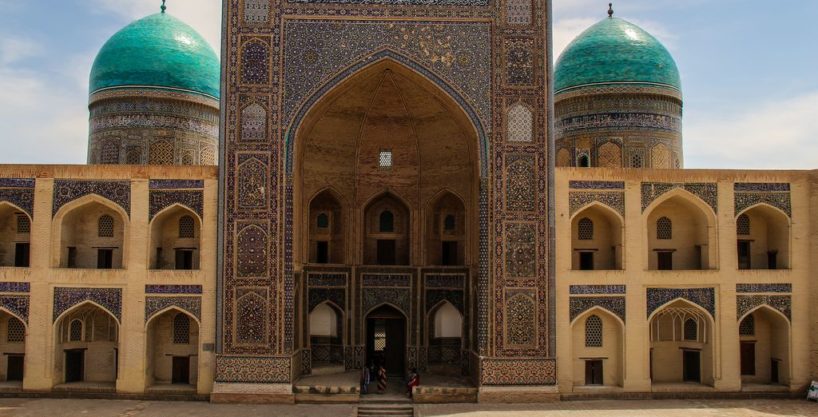The administrative center of the Jizzakh region is the city of Jizzakh with the same name. It is located at the Northern foot of the nuratinsky mountains, in the southern part of the Hungry steppe on the Sanzar river.
Jizzakh is located in a picturesque area. On the one hand, the harsh mountains of Nurata, at the foot of which the Sanzar river flows, on the other-the seemingly endless Hungry steppe, which the city shares with the Syrdarya region. The unique nature of the Jizzakh region is a variety of natural landscapes that combine unique elements of relief and a special climate. Favorable geographical conditions contributed to the emergence of ancient settlements and fortresses here. Traveling along the Sanzar river, you can still visit their ruins today.
Jizzakh could rightfully be considered one of the busiest trading cities on the Silk road. In the middle ages, an international Bazaar was held near Jizzakh in Mirasmand, where woolen fabrics, silk, jewelry and metal products, and Ustrushan jade were traded. For centuries, iron ore was mined in the Nurata mountains, so that even today you can find the remains of settlements of miners.
Today, the mountainous and wooded surroundings of Zaamin and Bakhmal with their dizzying canyons and rapid river flows are a Paradise for extreme tourists.
Those who want to get acquainted with the life of local residents are advised to visit the mountain villages of the Farshinsky district.
The most interesting for this purpose are the mountain villages of Asraf, Ukhum, Hayat, Majrum, Sentyabsay, located on the southern slopes of the Nurata range, near the district center of Farish.
Tourists walk through the picturesque surroundings of villages, admire nature, watch and listen to the singing of birds. Hiking along mountain trails from one village to another is practiced. Passing through the village, you can observe the daily work of local residents: cultivating the land, preparing animal feed, repairing houses, cooking dairy products, home Handicrafts. Residents are hospitable and invite to their homes to drink traditional Uzbek tea. In the evening, after dinner, a concert is organized where local residents play national instruments and sing their songs.
In the vicinity of the settlements, you can see ancient rock paintings, a nursery of endemic Kyzylkum sheep of Severtsev near the village of Khayat.
Tourists can stay here in traditional homes of local residents specially prepared to accommodate foreign tourists. In the homes of local residents there are no beds and, traditionally, people sleep on special mattresses on the floor. The bed is spread out before going to bed, collected in the morning and folded against one of the walls of the room. Each house has a garden with fruit trees.

Tourists can watch and participate in the cooking process, learn the basics of traditional Uzbek cuisine. In addition, they can also participate in milking domestic goats and cows.
Nuratinsky mountains. In the foothills of the Nurata mountains, which stretch for hundreds of kilometers from the city of Jizzak and the Hungry steppe, to the Kyzylkum desert, a small town – Nurata is spread out. It is the administrative and cultural center of the most mountainous region in Navoi region.
The Chashma complex has long been considered one of the most important centers of Islam in this region, which is visited annually by thousands of believers not only from neighboring settlements, but also from other countries. There is a mosque, a bathhouse, a hill left from an old fortress, and, of course, a well. By the way, they say that sometimes an amazing glow appears over the source.
It is worth noting some scientific data about this source: the water temperature in the Holy spring is always equal to 19.5 degrees. The water contains 15 trace elements, as well as gold, silver, bromine, and iodine, which give it unique healing properties. In addition, this source is home to Marinka fish. Just like water, these fish are considered sacred. For tourists visiting this wonderful city, it is always a joy to drink from the Holy spring, in order to get a little closer to the health and longevity of local residents.
One of the features of Nurata is a unique system of underground water channels running from the sacred spring. They were once common in many Central Asian cities. Today, the Nurata canal system is one of the few remaining to this day and is used by the local population, as it was hundreds of years ago.
Far from major industrial and tourist centers, Nurata lives its slow measured life. The population of the city is only 25 thousand people, and it seems that everyone here knows each other. The simplicity and hospitality of the inhabitants evoke warm feelings among many tourists and pilgrims who visit this small beautiful town every year. Nurata is indeed a bright and radiant place.Tourists can watch and participate in the cooking process, learn the basics of traditional Uzbek cuisine. In addition, they can also participate in milking domestic goats and cows.

